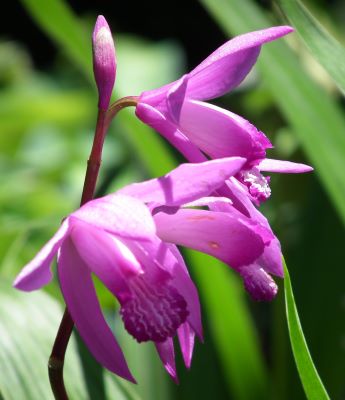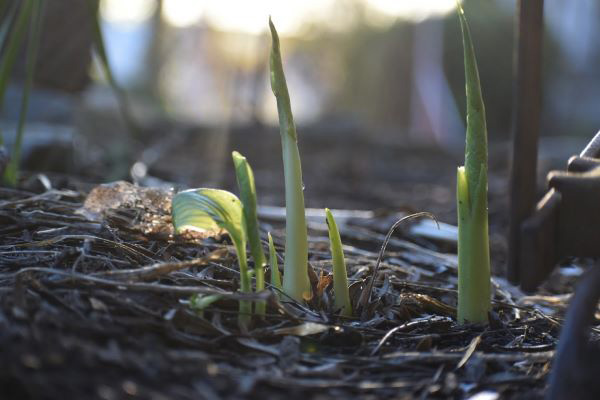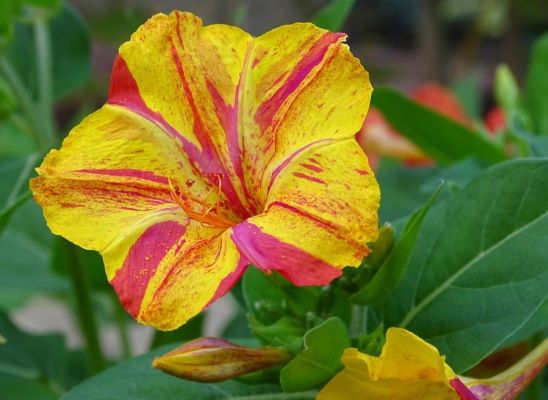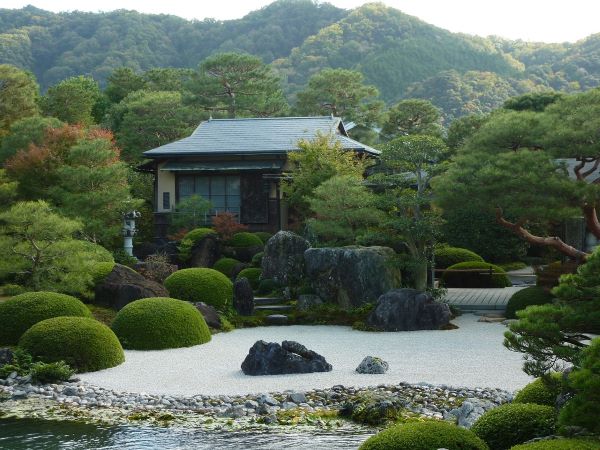10 Lesser Known Plants That Bloom in the Shade
Gardening in the shade is a challenge familiar to most gardeners, and we've learned to fill those areas with perennials of various textures and colors of foliage -- hostas, ferns, heucheras, carex and the like. And for a little flower power we can add azaleas and some bleeding hearts for the spring, various hydrangeas and astilbes for summer blooms, or just make that yearly planting of impatiens or begonias. But depending on your level of shade there are many more choices to be had, some that do double duty as evergreen groundcovers, some that also offer variegated foliage, and others that will simply delight you with their beautiful blossoms. We've put together a list of some less familiar plants for shady locations that will widen your color palette and your seasons of bloom. Once you know what kind of shade you have you can better evaluate their possible place in your sun-challenged spots.

What kind of shade do you have?
Few plants will grow and thrive in dense shade, but fortunately there are ways around that. If you have garden areas you'd like to plant that need more sunlight, consider limbing up trees or thinning branches to let in more light.
Unless completely blocked by buildings, even shady spots likely receive a little bit of sun. The key is to spend some time observing these areas as the sunlight changes throughout the day.
Full sun is considered 6 hours of direct sun, part sun is usually 4-6 hours, and anything less is some degree of shade:
- Part Sun: 4-6 hours of direct sun. Heat-loving species will appreciate the afternoon sun, while plants that enjoy cooler conditions will do better in morning sun with some relief during the hottest part of the day.
- Part Shade: 3 hours of direct sun or less; all day dappled light
Full Shade: gets no direct sun at all

Beautiful Blooming Plants for Shade and Growing Tips
1.Epimedium spp. and hybrids:
· Uniquely shaped flowers, most with long, spidery spurs, appear on wiry stems above the foliage in early spring (March). Flowers in shades of yellow, pink, orange, red, white or lavender. Has a delicate, airy appearance in bloom.
· Leaves usually evergreen but may be deciduous, heart- or elongated arrowhead- shaped, often with contrasting veins or netting or tints of red in spring, fall, and winter.
· Forms either a mound about 1 foot wide or a slowly-spreading groundcover, 8-12" high
· Prefers moist, well-drained soil in part shade; tolerates dry shade once established as it competes well with tree roots
· Deer resistant
· As it grows quite slowly it would not be a replacement for large groundcover areas, but is excellent edging a woodland garden or mixed in areas with spring-blooming bulbs or other low-growing shade plants
· Zones 5-8
2.Kerria japonica:
· Yellow 1 to 1.5 inch flat 5-petaled flowers bloom in spring (April/May) on this woody shrub. Also a double flowered form available.
· Small, heavily veined leaves on zig-zag stems; deciduous
· Upright, arching, twiggy habit to 7 feet wide and 9 feet high. May become leggy, so can be pruned or even cut to the ground after blooming (blooms on previous year's growth, so wait until after bloom to prune or you'll sacrifice next season's flowers)
· Prefers loamy, well-drained soil in part shade to shade.
· Generally deer resistant
· Zones 5-9
3. Bletilla spp.:
· Bletilla are hardy ground orchids with flowers resembling small dendrobium or cattleya in shades of purple, pink, or white, with a long blooming period in April and May.
· Leaves are long, pointed, and heavily pleated. Some varieties have variegated foliage.
· Forms a clump, 12-18 inches high and 6-12 inches wide, spreading slowly by rhizomes
· Prefers rich, moist, well-drained soil in part shade.
· Zones 5-9, these also grow well in pots and can be overwintered inside
4. Lysimachia alfredi 'Night Light':
· 1/2 inch star-shaped golden yellow flowers bloom in late spring and may continue until frost. (Mine bloomed for several weeks and then stopped, but it may rebloom)
· Small, pointed leaves are burgundy-bronze when grown in shade, with green and silver veining for an unusual striped effect
· Grows in a mound 10-12 inches high by 12-14 inches wide
· Prefers moist, fertile, well-drained soil in part shade to shade
· Deer resistant and appeals to bees and other pollinators
· Zones 5-9
5. Browallia:
· Vibrant blue or clean white 1 to 3 inch flowers bloom from summer to frost
· Upright-mounded habit, 10-14 inches high by 8-10 inches wide
· Average, well-drained soil and part shade. Grows well in pots.
· Deer resistant and heat and humidity tolerant
· Perennial in zones 9-11, grow as annual elsewhere
6. Gillenia trifoliata (Bowman's Root):
· Many narrow-petaled star shaped white or pink 1" flowers cover this native US plant in late spring (May-June)
· 'Pink Perfusion' is an especially attractive cultivar with pink blooms
· Small trifoliate green leaves are bronze in spring and have a delicate appearance with excellent texture; fall foliage is red
· Forms a mound 2' x 2'; can be slow to establish
· Prefers moist, well-drained acidic soil and sun to part shade, but adaptable to average soil; prefers a cooler site so morning sun is preferred
· Zones 4 to 8
7. Ligularia spp.:
· Tall narrow spires of golden yellow flowers bloom in summer to late summer or fall; some varieties bear rounded clusters of yellow to orange flowers
· Popular cultivars include 'The Rocket,' 'Desdemona,' 'Britt-Marie Crawford,' 'Othello,' and 'Little Rocket'
· Generally large growing, impressive plants with dramatic, glossy deep green or deep maroon foliage
· Dwarf varieties up to 30 inches, others up to 60 inches high and wide
· Needs rich, well-drained, moist soil in part sun to part shade; can be grown in typical garden beds as long as they are not allowed to dry out
· Also suitable for bog gardens and damp, shady sites
· Some cultivars, especially 'The Rocket,' may wilt during the day in hot weather (or too much sun) to preserve water in their leaves, but should recover by morning
· Zones 4-8
8. Angelica gigas (Korean Angelica):
· Rich purple globe-shaped flower clusters 3-5" wide late summer-fall
· Large, coarse lobed green leaves with purple flower stalks
· 4-6' high in bloom; 1.5 - 2 feet wide
· Prefers moist, somewhat rich, well-drained soil in part sun to part shade
· Deer and rabbit resistant; heat and humidity tolerant
· Flowers attract native bees and other pollinators
· Zones 5 to 9; biennial or short-lived perennial, usually reseeds
9. Begonia grandis (Hardy begonia):
· Bears typical small begonia flowers in clusters on gracefully arched stems in summer and fall, pink or white. Deadheading can prolong bloom.
· Foliage is similar in shape and size to dragonwing begonia, but leaves are thinner, olive green, with red veins on the underside
· Upright, mounding habit to 2 feet by 2 feet. Can create a sizeable colony via bulbils that drop from the leaf axils in fall.
· Prefers rich, well-drained, moist soil in part sun to shade
· Flowers attract pollinators
· Zones 6-9
10. Tricyrtis spp. and hybrids (Toadlily):
· Delicate, small, orchid-like blooms, usually spotted, in shades of lavender, purple, and white emerge on short stems along the leaf axils in fall
· Forms a clump of 12-36" (depending on cultivar) arching stems with 3-6" pointed leaves arranged in a ladderlike fashion. Many varieties have variegated foliage.
· Prefers rich, moist, well-drained soil in part shade; not generally suitable for containers as the rhizomatous roots need room to spread
· Deer resistant
· Zones 5 to 9















